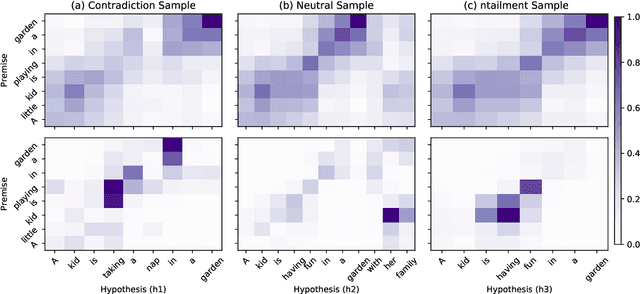Interpreting Recurrent and Attention-Based Neural Models: a Case Study on Natural Language Inference
Paper and Code
Aug 12, 2018
Deep learning models have achieved remarkable success in natural language inference (NLI) tasks. While these models are widely explored, they are hard to interpret and it is often unclear how and why they actually work. In this paper, we take a step toward explaining such deep learning based models through a case study on a popular neural model for NLI. In particular, we propose to interpret the intermediate layers of NLI models by visualizing the saliency of attention and LSTM gating signals. We present several examples for which our methods are able to reveal interesting insights and identify the critical information contributing to the model decisions.
* 11 pages, 11 figures, accepted as a short paper at EMNLP 2018
 Add to Chrome
Add to Chrome Add to Firefox
Add to Firefox Add to Edge
Add to Edge